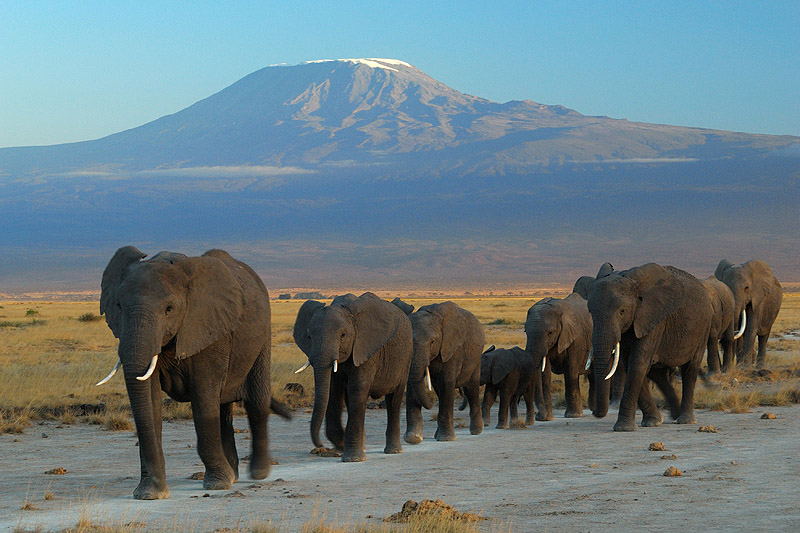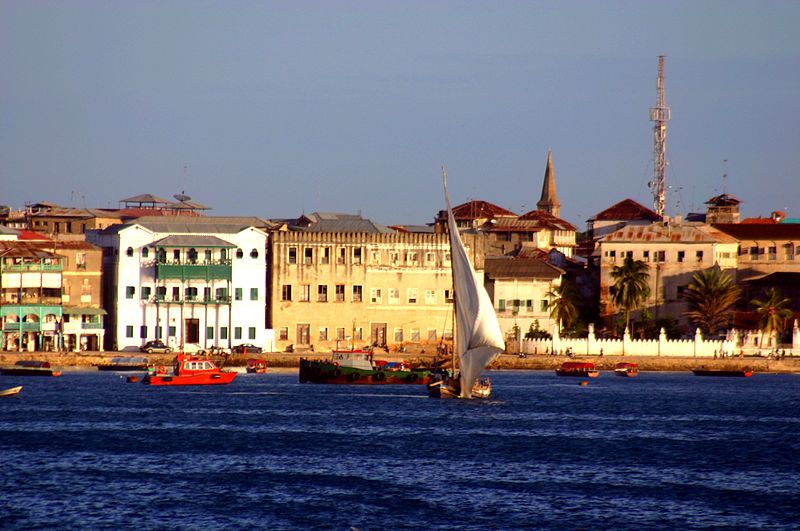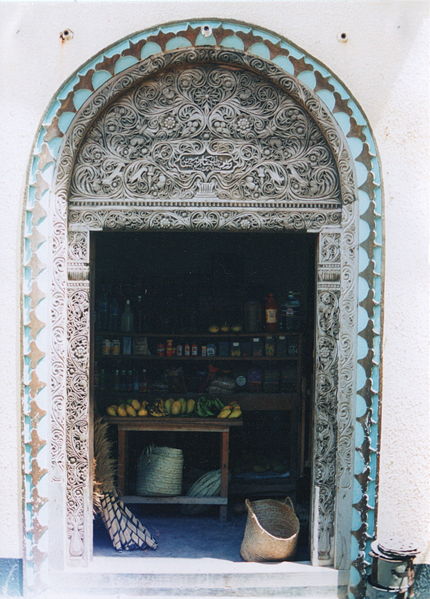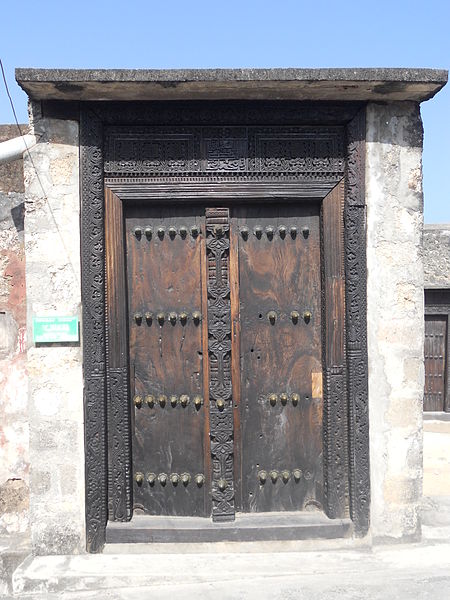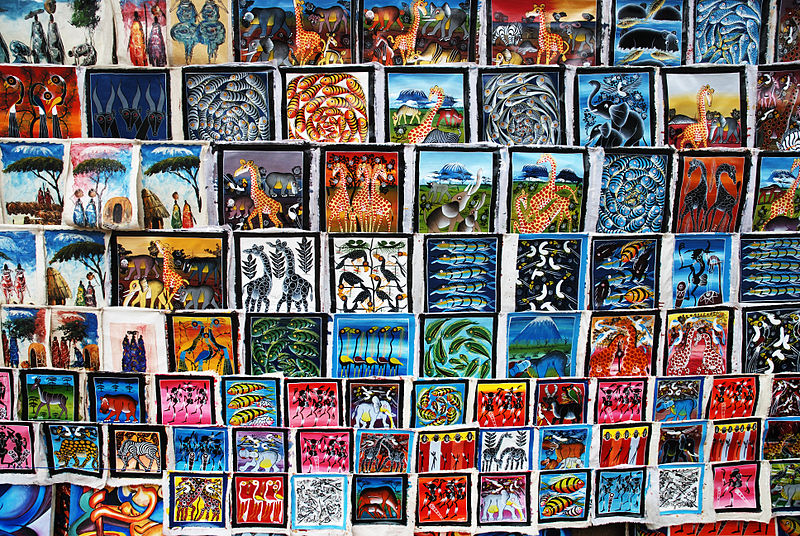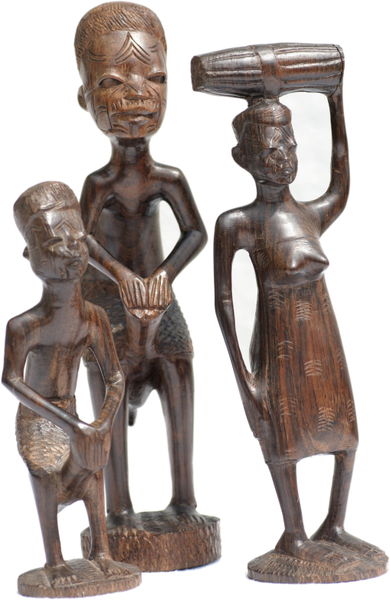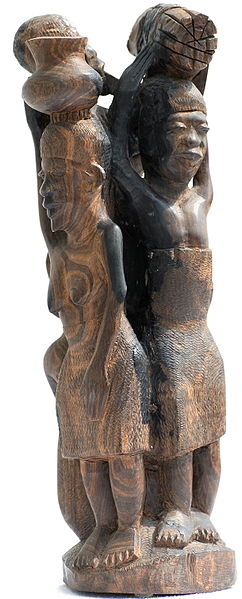Today’s blog post is taking us to East Africa, to the area where Swahili is spoken. Swahili is a language of the Bantu branch of the Niger-Congo family of languages and its name is derived from the Arabic word sawahil سواحل, meaning “coasts” (from sāḥil (ساحل), meaning “boundary” or “coast” ). Kiswahili means ‘coastal language’, the prefix ki- indicating a noun of the noun class which includes languages.
Standard Swahili developed from the urban dialect of Zanzibar City and was originally spoken by the people living along the coast of the mainland and was spread by fishermen to the islands off East Africa, but then became the language of coastal trade and from the 7th century CE onward it was heavily influenced by Arabic, mainly in the vocabulary. Other influences came from Persian, Portuguese, Hindi, French and English. Swahili is the official language of Kenya, Tanzania, Uganda and the Democratic Republic of Congo, as well as being the lingua franca of the Great Lakes region of Africa. It is spoken by about 50 million people. The name Zanzibar derives from Arabic Zinj el-Barr, which means Land of the Blacks. Zanzibar Island is called Unguja in Kiswahili, and Zanzibar Town is known as the Stone Town or Mji Mkongwe.
Here some survival phrases in Kiswahili:
Habari Hello
Tutaonana Goodbye
Asante Thank you
Karibu You’re welcome
Tafadhali Please
Ndiyo Yes
Hapana No
Pole Sorry
Samahani Excuse me
Jina lako nani? What’s your name?
Jina langu ni.…. My name is….
The greeting ‘jambo‘ is used to greet tourists who are presumed not to be able to speak Kiswahili. Hujambo? means ‘How are you?’ and the answer is Sijambo, meaning ‘I am fine’.
And here are the words for the most iconic East African animals:
simba lion
tembo elephant
chui leopard
kifaru rhinoceros
twiga giraffe
punda milia zebra
swala gazelle
Tanzania is also home to two internationally recognized art styles, Tingatinga painting and Makonde carvings. The Tinga Tinga school of painting is a style which developed in the second half of the 20th century in the Oyster Bay area of Dar es Salaam in Tanzania and is named after its founder, Edward Said Tingatinga. It later spread to most of East Africa. The art style is characterized by its bright colours and its depiction of people, animals or daily life. Tingatinga paintings are traditionally made on masonite (a hardboard made of steam-cooked and pressure-molded wood fibres) or on canvas, using several layers of bicycle paint which gives the paintings their brilliant and highly saturated colours. Tingatinga paintings are an example of a tourist-orientated style, with their subject matter chosen to appeal to western tourists, e.g. featuring the Big Five of Eastern African mammals. The paintings are also usually small, so they can be easily transported, and their style can be considered both naive and caricatural, and sarcasm and humour are often evident.
Makonde art is a sculptural style developed by the Makonde, a tribe native to Tanzania and Mozambique. It is famous for the high Ujamaas (Trees of Life) made of the hard and dark wood of the ebony tree (Diospyros ebenum and Swartzia ssp.). The Makonde traditionally carve masks, figures and household objects.

